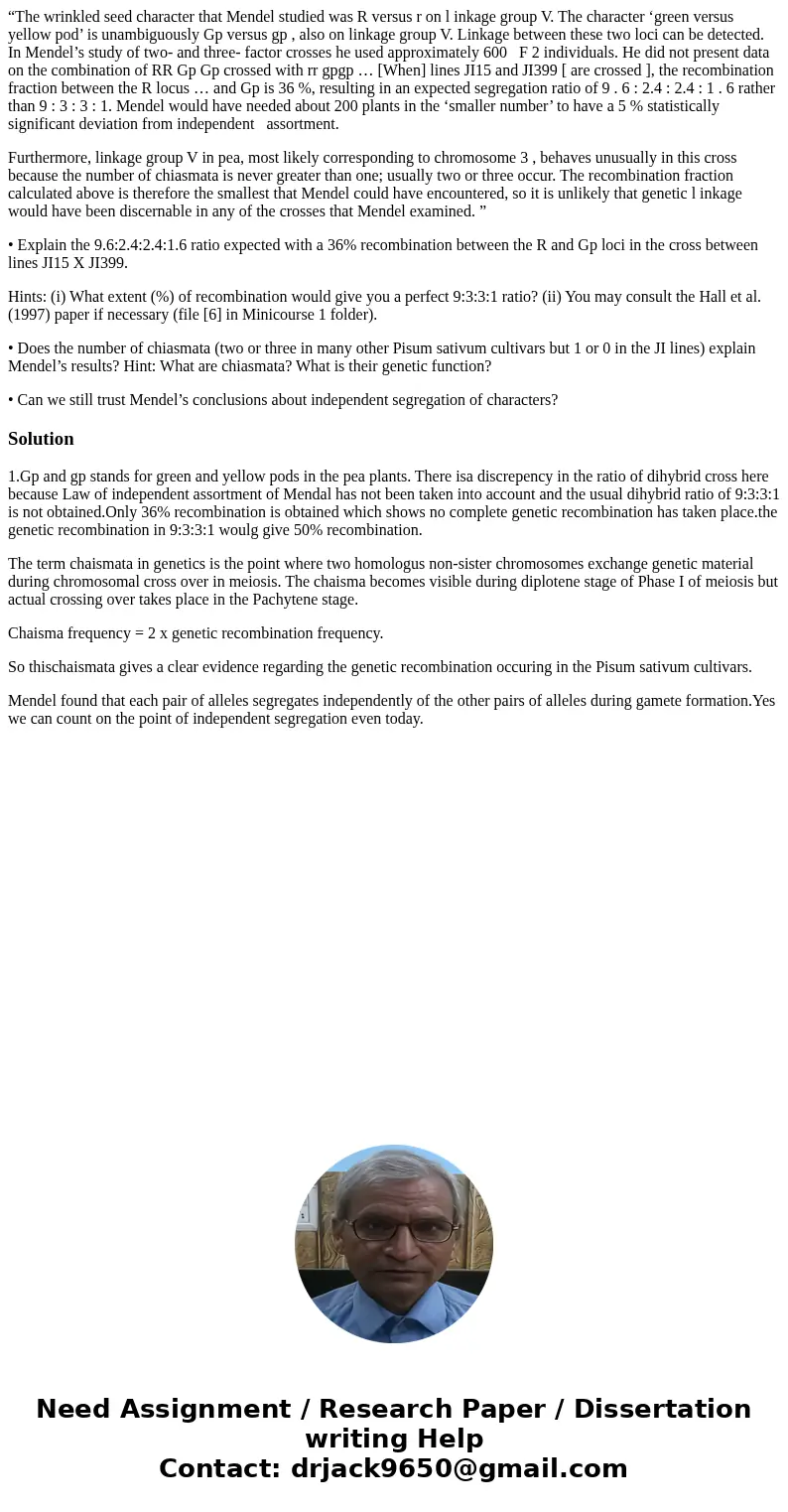The wrinkled seed character that Mendel studied was R versus
“The wrinkled seed character that Mendel studied was R versus r on l inkage group V. The character ‘green versus yellow pod’ is unambiguously Gp versus gp , also on linkage group V. Linkage between these two loci can be detected. In Mendel’s study of two- and three- factor crosses he used approximately 600 F 2 individuals. He did not present data on the combination of RR Gp Gp crossed with rr gpgp … [When] lines JI15 and JI399 [ are crossed ], the recombination fraction between the R locus … and Gp is 36 %, resulting in an expected segregation ratio of 9 . 6 : 2.4 : 2.4 : 1 . 6 rather than 9 : 3 : 3 : 1. Mendel would have needed about 200 plants in the ‘smaller number’ to have a 5 % statistically significant deviation from independent assortment.
Furthermore, linkage group V in pea, most likely corresponding to chromosome 3 , behaves unusually in this cross because the number of chiasmata is never greater than one; usually two or three occur. The recombination fraction calculated above is therefore the smallest that Mendel could have encountered, so it is unlikely that genetic l inkage would have been discernable in any of the crosses that Mendel examined. ”
• Explain the 9.6:2.4:2.4:1.6 ratio expected with a 36% recombination between the R and Gp loci in the cross between lines JI15 X JI399.
Hints: (i) What extent (%) of recombination would give you a perfect 9:3:3:1 ratio? (ii) You may consult the Hall et al. (1997) paper if necessary (file [6] in Minicourse 1 folder).
• Does the number of chiasmata (two or three in many other Pisum sativum cultivars but 1 or 0 in the JI lines) explain Mendel’s results? Hint: What are chiasmata? What is their genetic function?
• Can we still trust Mendel’s conclusions about independent segregation of characters?
Solution
1.Gp and gp stands for green and yellow pods in the pea plants. There isa discrepency in the ratio of dihybrid cross here because Law of independent assortment of Mendal has not been taken into account and the usual dihybrid ratio of 9:3:3:1 is not obtained.Only 36% recombination is obtained which shows no complete genetic recombination has taken place.the genetic recombination in 9:3:3:1 woulg give 50% recombination.
The term chaismata in genetics is the point where two homologus non-sister chromosomes exchange genetic material during chromosomal cross over in meiosis. The chaisma becomes visible during diplotene stage of Phase I of meiosis but actual crossing over takes place in the Pachytene stage.
Chaisma frequency = 2 x genetic recombination frequency.
So thischaismata gives a clear evidence regarding the genetic recombination occuring in the Pisum sativum cultivars.
Mendel found that each pair of alleles segregates independently of the other pairs of alleles during gamete formation.Yes we can count on the point of independent segregation even today.

 Homework Sourse
Homework Sourse